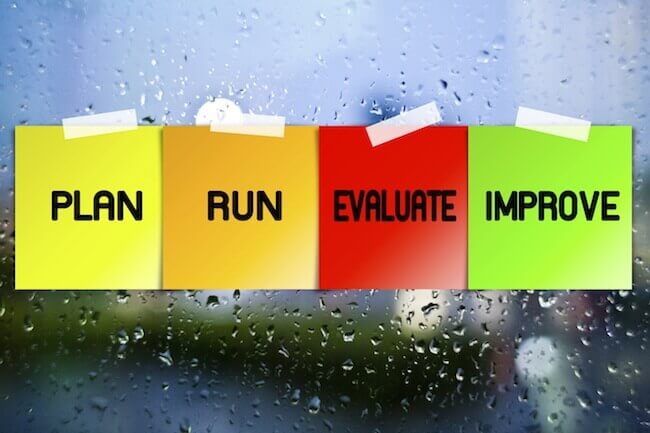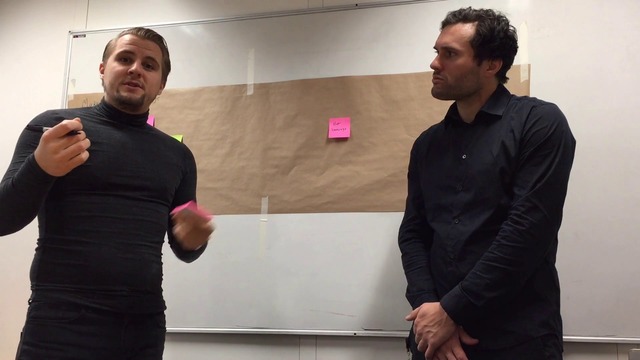Terry Giles, from Terry AG Consulting, who has spent years mapping and improving processes, takes a step back and considers the question, ‘why use process mapping?’
A question I am asked frequently is ‘Why do we need to map our processes?’ I get this question so frequently that I thought it justified an entire blog post - because the benefits of process mapping have the potential to be outstanding.
The Benefits of Process Mapping:

Image sourced from: google.co.uk/mapping
My answer tends to differ, depending on which bit of an organisation I am dealing with. If I am talking to the Legal or Finance departments my emphasis tends to be on the demonstration of compliance to standards or regulatory requirements (e.g. SOX, Data Protection).
However if I am talking to the Operations side of the business, my emphasis is more on training and having a point of reference for how things are done.
If I talk Quality, the emphasis is very much on two fronts; demonstrating compliance to ISO 9001 - and similar standards - and driving process improvements.
Yet another benefit will come to the fore when I am talking to IT and development, when my focus will be on how business process mapping will enable them to understanding how the processes work and how IT can best support those processes with new systems and developments.
Return on the Investment with Business Process Mapping

Image sourced from: blog.triaster.co.uk
So where does this leave me when I have to justify the costs associated with introducing business process mapping?
Well, I have left out one of the most important groups from my list above - that of Senior Management. They hold the purse strings and as budgets are always tight, will need to see a return on their investment.
In many ways, when Senior Management ask the question ‘Why do we need to map our processes?’ the response is difficult to formulate, as generally they can understand that process mapping would be a good idea, but not necessarily why they should provide funding for it, when there are so many other worthy calls on their budget. Their departmental heads will all agree for the reasons above that process mapping is a useful thing, but apart from one or two considerations (Quality and Compliance) it will not generally be their highest priority to spend money and resources on.
Why Use Process Mapping? Business Improvement Absolutely Justifies Investment:

Most organisations have some form of business improvement system in place ranging from a suggestion scheme, through a more formalised 6σ or Lean programme, to a full-scale process improvement programme.
One of the fundamentals in any business improvement programme is identifying three states within the business:
- Where are we now?
- Where do we want to be?
- How do we transform from where we are now to where we want to be?
In just the same way as planning a journey from say Reading to Birmingham, a map showing road and rail connections is invaluable - so a map of your current processes will show your current route to creating your outputs.
Many of the organisations that I have worked for have evolved their processes over time and many of them have created written documentation explaining how their processes work. Needless to say, that when this occurs, ‘customs and practices’ have been carried through.
Creating maps of how these processes work provides a pictorial view, which like a road map will provide a good overview.

Using the road map analogy again: written directions will get you to where you want to go, but a map will show if you are taking the best and most efficient route.
Enhance Your Change Management with Process Mapping:
The way all organisations work is subject to constant change with processes being modified either by deliberate changes or by evolution. Process mapping enables the ‘Where are we now’ state to be identified and captured and any changes, planned or evolved, to be compared with this state to check if you are still on the best road to get to where you want to be.
So…going back to my original question of ‘why map processes?’, the answer will depend on what your objectives are, which again will depend on your function within the organisation. If you are trying to convince Senior Management to spend money on getting processes mapped, you will need to get some key managers to back you. To do that you will need to look from their perspective and create a proposal that will address their needs.
Want more resources on process mapping? You may be interested in reading Michael Cousins’ article:
How to Get the Best Return on Investment From 6 Common Business Goals
And/or Emma Harris’ article:
Process Mapping: Who does it and why?
If you're looking to jump right into the process mapping pool, make sure you check out: 21 Pages to Successful Process Mapping white paper by clicking on the button below:
Related articles:
Problems with Business Process Management: Stakeholder Buy In
Process Mapping: Who does it and why?
How to Get the Best Return on Investment From 6 Common Business Goals
Written by Terry Giles
Terry Giles is a consultant for TerryAG Consultancy. He has a great deal of experience in developing Business Management Systems based around a variety of models including ISO 9001, TL 9000, ISO 14001, EFQM, Baldrige, CMMi, ITIL, RiskIT and CobiT 4.1 & 5.


